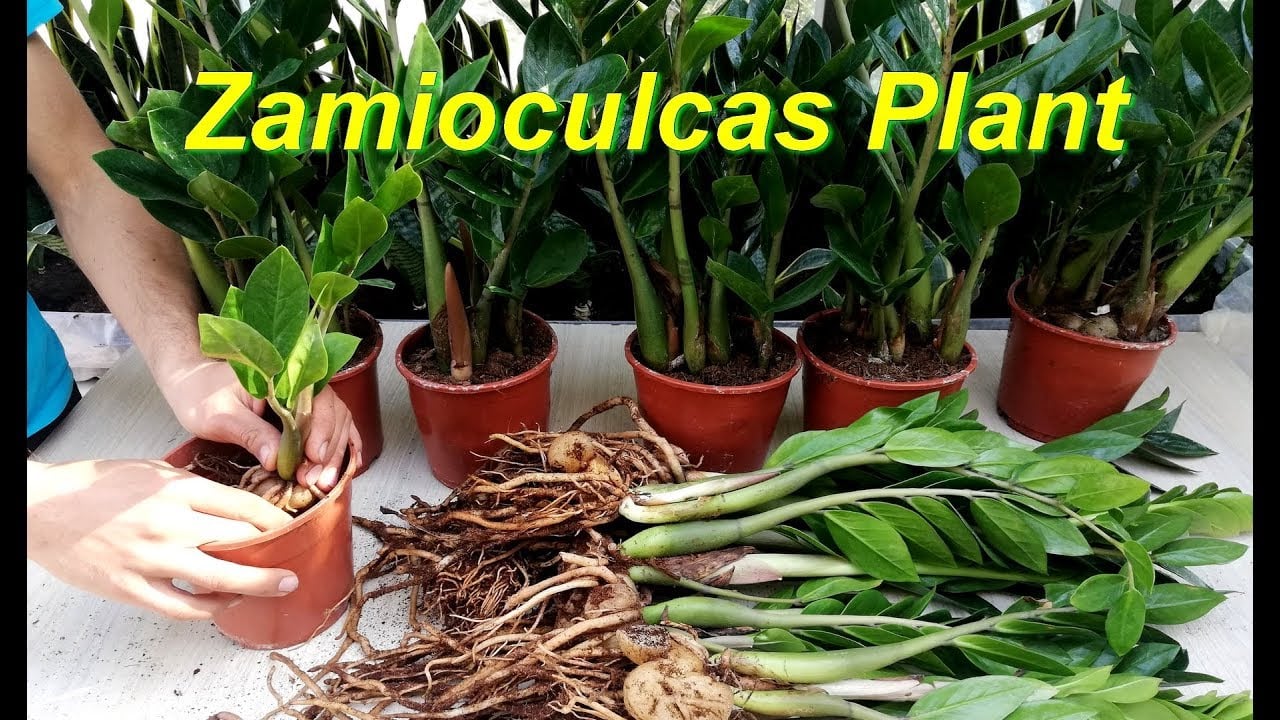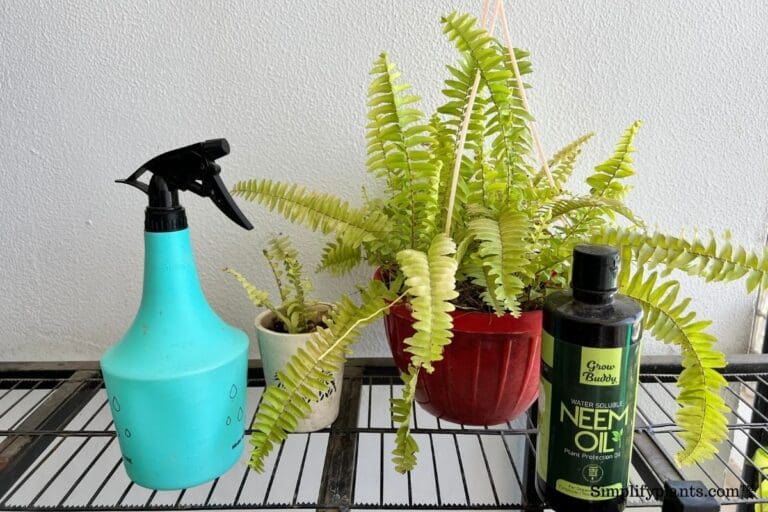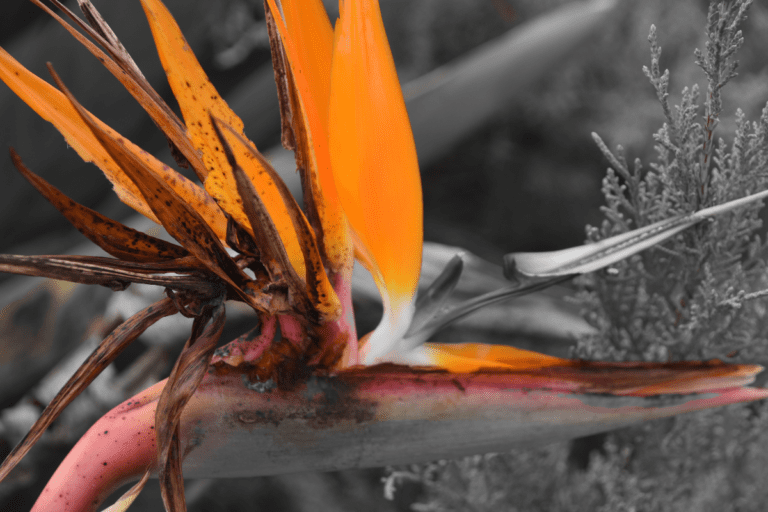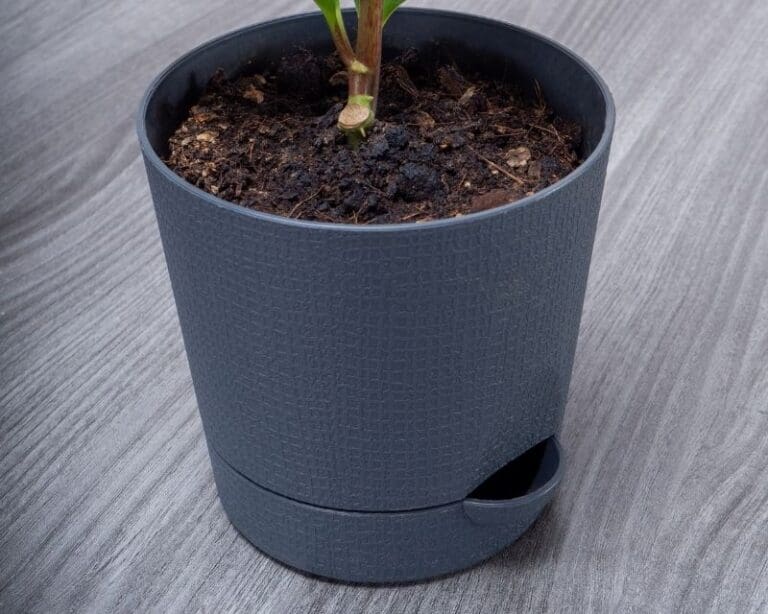Does ZZ Plant Like To Be Root Bound? (Signs+When To Repot)
If you just bought a new ZZ plant home or your ZZ plant has suddenly stopped growing, then you might be wondering if the plant is root-bound. So, should you repot your ZZ plant or leave them in a small pot? Does the ZZ plant like to be root bounded? Let’s find out!
ZZ plant doesn’t like to be root bound as it affects the growth of the plant. When a plant is root bounded, it doesn’t have enough space to expand its roots. The roots have displaced most of the soil, leading to a deficiency of oxygen, water, and nutrients in the plant. Repot the ZZ plant in a bigger pot to prevent further damage.
ZZ plants can grow fast, and they will need a new pot every 2-3 years. But how will you know if your ZZ plant has outgrown its current pot, and what signs should you look for?
It can be challenging for a beginner hobbyist to identify the signs of a root-bound plant. So, in this article, we shall discuss all about root bound ZZ plant. How did we identify it, what steps did we take to save it, and more? So, let’s get started.

Please note: Simplify Plants is reader-supported. Some links in the post are affiliate links and I get a commission from purchases made through links in the post.
Do ZZ plants like to be root bound?
No, the ZZ plant doesn’t like to be root bound. In fact, no houseplants should be kept in smaller pots that restrict their root growth and impact the plant’s overall growth.
As the plant grows, the plant’s root will expand, and it will eventually reach a point where it displaces all the soil and forms a tangled root ball that can’t absorb the nutrients well.
The root will form a complex cluster, and since it doesn’t have any further space to grow, it will start turning brown, and eventually, root rot begins.
As there is no growing medium left, the nutrients and water will pass through the drainage hole quickly as there is no medium left to hold on. That will result in dehydration and nutrient deficiency in the ZZ plant.
If we don’t realize the problem at this point, then your ZZ plant might start wilting, and it might be impossible to save them after this point.
You need to examine your ZZ plant carefully when you see the first of those signs. Else, it might be a perfect recipe for disaster.
How to tell if the ZZ plant needs repotting
It can be challenging for a beginner to identify if their ZZ plant is root bound or not. But today, we decided to make it simple and straightforward. So, there are two steps to identify if your ZZ plant is root bound or not. These include:
- Examine the plant for visual cues that tells your ZZ plant is root bounded.
- Slide the plant out of the pot and examine the root ball of the plant.

The first and foremost sign we notice in root-bound plants are visual cues. These include:
- Leaves are turning yellow and brown.
- The growth of the plant is halted.
- Roots are visible from the drainage hole.
- Rootball starts spiraling and forming a complex cluster.
- The plant leaves start to droop and curl.
- Signs of dehydration are clearly visible in the plant.
- The soil doesn’t hold up water and dries up quickly.
- The pot has little to no soil left at the top, and roots start surfacing.
- The pot starts breaking down.
If you beleive the plant has everything balanced and proper care is provided to your ZZ plant, but still, it is struggling with the above problem, then there is a high probability that your ZZ plant is root bounded.
To confirm the same, we need to examine the root ball of the plant. So, let’s check out the steps to check the root ball of your ZZ plant:
- Lay the plant pot on its side.
- Try to loosen up the soil and gently take the plant out.
- If the plant doesn’t come out on its own, avoid applying force.
- Instead, use a long thin serrated knife and run it around the edges of the pot.
- Gently bring the plant out once the soil gets to loosen up.
- If the plant still doesn’t come out, you might have to break the container.
- Once the plant is finally out, examine the root ball of the plant.

A root-bound plant has various stages to it. And depending upon the stage, you need to decide at this point.
| Root Condition | Status |
|---|---|
| Root just began wrapping around the root ball | Slightly root bounded |
| Roots started forming mats around the root ball | Root bounded |
| Roots have formed a solid mat and no soil can be seen | Severely root bounded |
If at this point you feel your ZZ plant is slightly root bounded, then you can either repot them or even leave them for a year before repotting them.
However, if the plant is tightly root bound or severely bounded, then you might have to repot them immediately.
Depending upon the root and health of your ZZ plant, you have to make a judgment call at this stage.
When should I repot my ZZ plant?
ZZ plant is a medium grower. Thus, the plant neither grows too fast nor too slow, making it easier to care for. You need to repot your ZZ plant every 2-3 years, depending upon the plant’s growth.
If the environmental conditions are all right, your plant will proliferate and need repotting every two years. Else, it might last in the same pot for 3-4years as well.
It is recommended to repot your ZZ plant during spring or summer as it lies in the dormant stage during winter. Stressing the plant in winter can do more harm than good.
Best Soil and pots for the ZZ plant
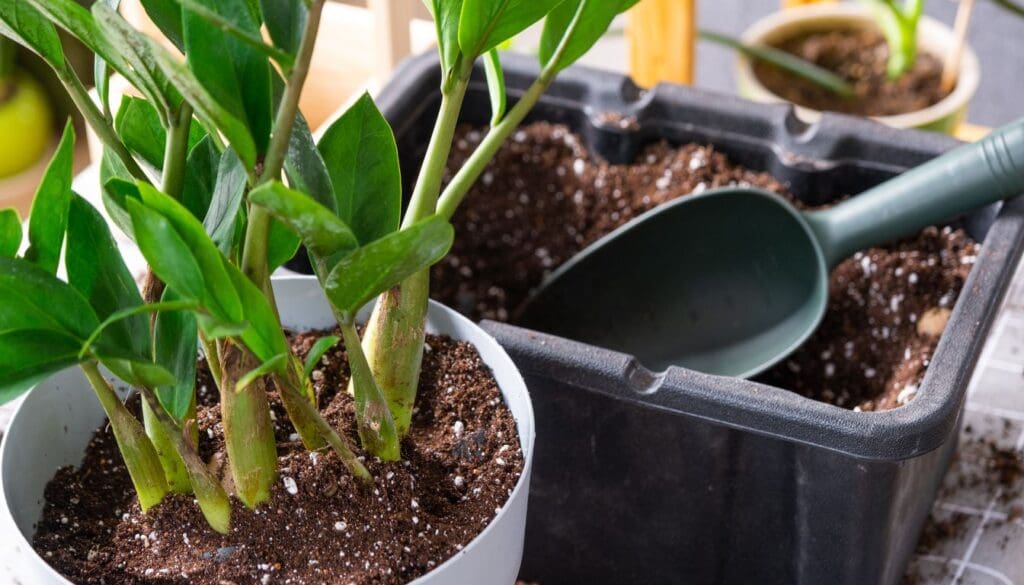
You will need soil and a pot to fix a root-bound ZZ plant. So, let’s quickly check out the requirement of the ZZ plant and get the supplies needed.
ZZ plants can grow pretty big if the right conditions are provided to them. Most commonly used container sizes vary from 4″-14.”
Choosing the correct pot plays a vital role in the growth of your ZZ plant. A container 2″ bigger than the current one shall be a perfect choice while repotting your ZZ plant.
For example: If your ZZ plant is currently potted in a 6″ pot, then you can go with a container size of 8″. It is wise to go one size big as too big of pot can do more harm than good.
If you are looking for a fantastic pot for your ZZ plant, then you can pick any of these pots from Amazon.
Apart from the pot, the growing medium, which is the soil, also plays a vital role in the plant’s growth. Every plant has different soil needs, and the same is true for the ZZ plant as well.
ZZ plant prefers a light soil mix that retains moisture for some time, but at the same time, it must not get soggy. So, an ideal mix would be:
- 1 part of potting soil (I prefer miracle grow from Amazon)
- 1 part cactus/succulent soil (I would strongly recommend Hoffman mix)
- 1 part pumice/perlite
- A handful of compost/worm casting.
If you don’t want to go the DIY route, you can contact this fantastic shop at ETSY, and they will provide you with a custom mix that is perfect for your ZZ plant.
Also read: What happens if you repot a plant in a pot too big?
How to save root-bound ZZ plant?
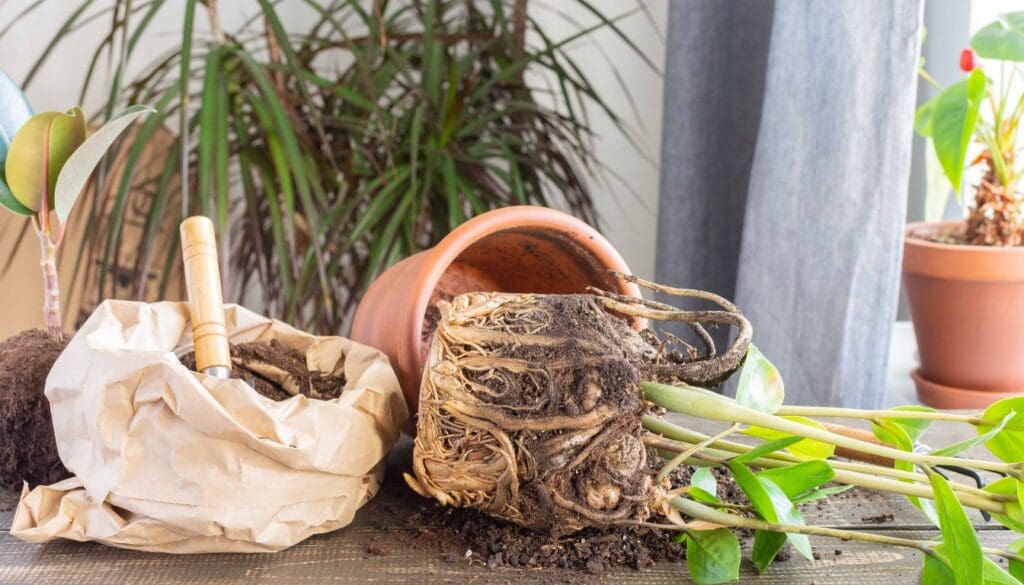
Once you have found that your ZZ plant is root bound, then there are only two ways you can fix it effectively.
- Repot your ZZ plant into a larger pot
- Divide the ZZ plant and keep them in multiple smaller pots.
I know that sounded like a difficult task. But trust me, when you get your hand into it, it’s simple and straightforward.
However, before we fix our root-bound snake plant, here is a quick note on its toxicity.
Most houseplants, including ZZ plants, produce a chemical known as calcium oxalate that is used as a self-defense mechanism in them.
In layman’s terms, these are small sharp-edged crystals that can lead to irritation, rashes, and pain if touched or ingested.
Although these are not life-threatening for an adult, kids and pets are in the high-risk category.
Thus, we need to wear a mask as well as gloves while handling our ZZ plant. With that out of the way, let’s dive into the process itself.
Repotting ZZ plant
Repotting your ZZ plant into a larger size pot is the best way to fix the root-bound ZZ plant’s problems.
A larger pot, fresh soil, and ample space to expand its root will give your ZZ plant a new life.
So, once you have picked the pot and prepared everything for your ZZ plant, let’s begin with the process of repotting your ZZ plant.
But before we begin, here is a quick note: Watering your ZZ plant thoroughly a night before repotting will make the soil loose. Thus, the entire process will become easy.
- Move the plant to a sink or work area to prevent the mess.
- Lay the pot on its side and try to gently pull the plant out.
- Once the plant is out, remove any old soil attached to the root ball.
- Examine the roots of browning and damage.
- Trim the damaged roots and foliage.
- Take a bigger pot and fill it with 1/3 of fresh soil.
- Repot the plant in and fill fresh soil from all sides.
- Move the plant into a bright spot but make sure direct sunlight doesn’t reach the plant.
- Water the plant after everything is done.
You must never wait for your ZZ plant to become extremely root-bound. Instead, regularly examine the plant and repot them as it gets slightly root-bound.
Repotting the plant at an early stage is much easier than doing it at a later part. So, keep an eye out for the same.
Dividing ZZ plant
If you don’t have space for a bigger size pot or you want to multiply your ZZ plant, then dividing the plant is the best alternative.

Here are the steps required to divide your ZZ plant:
- Water your ZZ plant a night before dividing to loosen the soil.
- Lay the pot on its side and slide your ZZ plant out of the pot.
- Use a sterile knife or your hands to divide the ZZ plant. Use their root bulbs as natural guidelines.
- You can further divide the plant into halves if needed.
- Don’t worry if the bulbs in the roots are split. Your plant will recover soon.
- Now take fresh pots and soil and repot the divided ZZ plant into separate pots.
- Fill the pot with soil and move them to a bright indirect lighting spot.
- Water the plant thoroughly.
If the right conditions are provided, then you will see new growth within a few weeks.
Final thoughts

ZZ plant doesn’t like to stay root bound, so you need to continually check on the same and repot them whenever needed.
However, there is no fixed time frame that you can follow. Each plant has different needs and different growth rates. Thus, whether your plant needs to be repotted or not will depend upon your plant itself.
Growing a ZZ plant in a small pot can affect the plant’s growth in the long run. Thus, make sure you grow them in an appropriate size pot with appropriate space for the roots to expand.
If the roots are tightly packed, and there is no space in the pot for the plant to expand its roots, then your plant is likely going to suffer.
Thus, look out for the signs and take appropriate action to repot your ZZ plant whenever needed.
Sources: ZZ plant study, College of agricultural studies, University of Vermont, National science foundation.
Recommended Garden Supplies
| Product Image | Our Recommended Gardening Supplies | Check Offers! |
|---|---|---|
Top Top
Top
Top
Top
Top
Top
Top
Top | rePotme Houseplant and Tropical Classic Potting Soil Mix | Check Offer On Amazon |
 Top
Top
Top
Top
Top
Top
Top
Top | Espoma Organic Indoor Plant Food | Check Offer On Amazon |
 Top
Top
Top
Top
Top
Top
Top
Top | GooingTop LED Grow Light 6000K Full Spectrum Clip Plant Growing Lamp | Check Offer On Amazon |
 Top
Top
Top
Top
Top
Top
Top
Top | Soil Moisture Meter | Check Offer On Amazon |
 Top
Top
Top
Top
Top
Top
Top
Top | Govee Hygrometer Thermometer, Bluetooth Enabled! | Check Offer On Amazon |
 Top
Top | LEVOIT Humidifiers for Large Room(Best For Plants) | Check Offer On Amazon |
 Top
Top
Top
Top
Top
Top
Top
Top | Upgraded DIY Automatic Drip Irrigation Kit, 15 Potted Houseplants Support | Check Offer On Amazon |
 Top
Top
Top
Top
Top
Top
Top
Top | Stainless Steel Heavy Duty Gardening Tool Set | Check Offer On Amazon |
 Top
Top
Top
Top
Top
Top
Top
Top | Bonide Insecticidal Soap | Check Offer On Amazon |
 Top
Top
Top
Top
Top
Top
Top
Top | Bonide 32 oz Spray Neem Oil for Organic Gardening | Check Offer On Amazon |
 Top
Top
Top
Top
Top
Top
Top
Top | Garden Safe Fungicide | Check Offer On Amazon |

